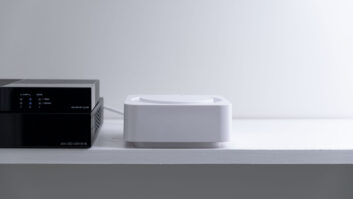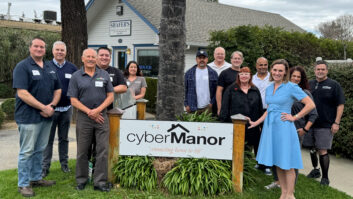Our best work comes when we wow our clients and do much more than the bare minimum. Last week, a colleague of mine who owns an integration firm got a referral for a project from a family friend who owns and runs a projector review site. It turns out the homeowner had been reading the review site for a while to get a better feel for projectors and screens and for what would work with his space. He reached out to the reviewer for advice on a projector and screen to work in a living room in a NYC loft apartment with a fairly short throw distance and a decent amount of natural light. The reviewer provided some recommendations and gave my friend’s name as an integrator in the area who could help with the equipment purchase and install.

Image: Thinkstock
The client called the integrator, and after introductions and discussion, was told that the project would likely cost $15,000 to $20,000, including the projector, screen, Control4 controller and remote, AVR, five speakers, subwoofer, network (router, WAP, and switch), wiring, and installation. With expectations based on a sub-$1,000 projector and a $4,000 Screen Innovations motorized Slate screen (to combat the ambient light), the client was pretty taken aback by the estimate. He felt that my friend was over-specifying what was required—particularly an upgraded network and a universal remote—and decided not to pursue the work any further.
My friend reached out to the reviewer and let him know the status and to thank him for the opportunity. While the reviewer understood a traditional integrator’s way of thinking about bulletproof systems and rock-solid performance, he is also a big supporter of DIY solutions as well. He is a bit of a tinkerer (obviously) and is very happy with his Apple AirPort router and Harmony remote, as well as all of his DIY home automation equipment from SmartThings, Lutron Caseta, Wink, and the like.
They ended up having a pretty long and involved discussion on the pros and cons of the DIY market, and the reviewer felt there was really an opportunity for an integrator in the space to help clients who did not want the expense or complexity of the more professional systems from Control4, Crestron, Savant, and their cohorts. He felt that if client expectations were set and managed, that the less-than-bulletproof reliability of the DIY solutions could be a business model.
My friend then gave me a call for a gut check. He had a lot of convincing reasons for sticking to his guns and insisting on a solid solution, and it wasn’t about ego, margin, or “what everyone else is doing.” There were two main, very rational, reasons to stick with a professional, reliable, and high-quality solution:
1) It is his reputation at risk. No matter how much you set expectations, there is a segment of customers who will nod and say “OK” during the consultative stage but will conveniently forget everything that was discussed after the fact, when things don’t work perfectly. And there is no way to identify and weed out this personality ahead of time. This goes for the DIY product and even the client’s idea to “just use the projector’s built-in speakers.” Yes, that would work, but when friends come over and the sound is terrible and no one can hear what is being said, who is going to be blamed? Will the client own up to having a tight budget or will they blame the integrator?
2) Scale is difficult to manage. While troubleshooting your own system isn’t that big of a deal, or even troubleshooting a handful of customers, once you have a large enough installed base, it quickly becomes untenable. Assuming your company installs one system a week, which is not at all unrealistic for someone installing DIY product, after just five years in business you would have 250 installed systems in the field. If each system had just one service call per year, that would be a service call every weekday of the year, on average. With the more professional systems this is mitigated in two ways—reliability and remote access
Fast-forward to yesterday, and the client reached back out to my integrator friend to come over for a proposal. He must have done some more research or talked to other integrators who gave him similar answers, because now $15,000-$20,000 was within reason. My friend has completed the on-site consultation and is putting together the full proposal to be sent to the client by the end of this week.
It just goes to show that by doing what you believe and maintaining a system performance standard, things will often work out. My friend was ready to walk away from the project, but now he may have a nice three- to four-day project that will be profitable, reliable, and will impress the client and their friends. While compromise is often necessary to meet a budget, it is key to know what your minimum requirements are before you take on a project, and to have valid reasons why the solution you are recommending is the right one.







